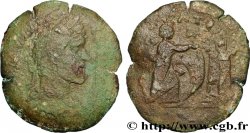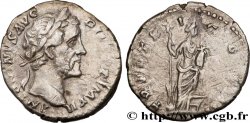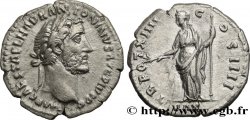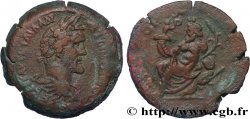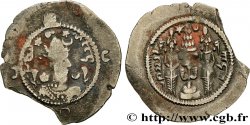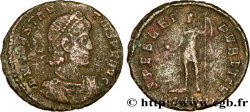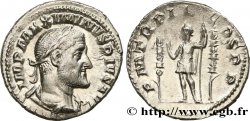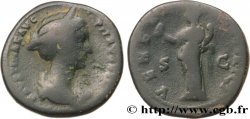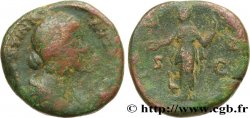E-auction 313-230879 - brm_529460 - ANTONINUS PIUS Sesterce
You must signin and be an approved bidder to bid, LOGIN TO BID. Accounts are subject to approval and the approval process takes place within 48 hours. Do not wait until the day a sale closes to register. Clicking on « bid » constitutes acceptance of the terms of use of cgb.fr private e-auctions.
Bids must be placed in whole Euro amounts only. The sale will start closing at the time stated on the item description; any bids received at the site after the closing time will not be executed. Transmission times may vary and bids could be rejected if you wait until the last second. For further information ckeck the E-auctions F.A.Q.
NO BUYER'S FEE.
NO BUYER'S FEE.
| Estimate : | 90 € |
| Price : | 30 € |
| Maximum bid : | 30 € |
| End of the sale : | 15 April 2019 14:17:00 |
| bidders : | 3 bidders |
Type : Sesterce
Date: 151-152
Mint name / Town : Roma
Metal : bronze
Diameter : 33 mm
Orientation dies : 6 h.
Weight : 25,71 g.
Rarity : R1
Coments on the condition:
Monnaie sur un flan bien centré à l’usure importante. Cependant, elle reste parfaitement identifiable. Exemplaire qui a été nettoyé anciennement et qui commence toute juste à se repatiner
Catalogue references :
Obverse
Obverse legend : ANTONINVS AVG PI-VS P P TR P XV.
Obverse description : Tête laurée d'Antonin le Pieux à droite (O*).
Obverse translation : “Antoninus Augustus Pius Pater Patriæ Tribunicia Potestate Consul quintum decimum”, (Antonin auguste pieux, père de la patrie, détenteur de la puissance tribunitienne pour la quinzième fois).
Reverse
Reverse legend : SA-[LVS - A]-VG COS IIII/ S|C.
Reverse description : Salus (la Santé) debout à gauche, tenant un sceptre long de la main gauche, une patère de la main droite et nourrissant un serpent enroulé autour d'un autel.
Reverse translation : “Salus Augusti Consul quartum”, (La Santé de l'auguste, consul pour la quatrième fois).
Commentary
Un seul ruban visible. Antonin acquiert sa quinzième puissance tribunicienne en 151 alors que son quatrième consulat remonte à l’année 145. Monnaie qui provient probablement d’une trouvaille ancienne.







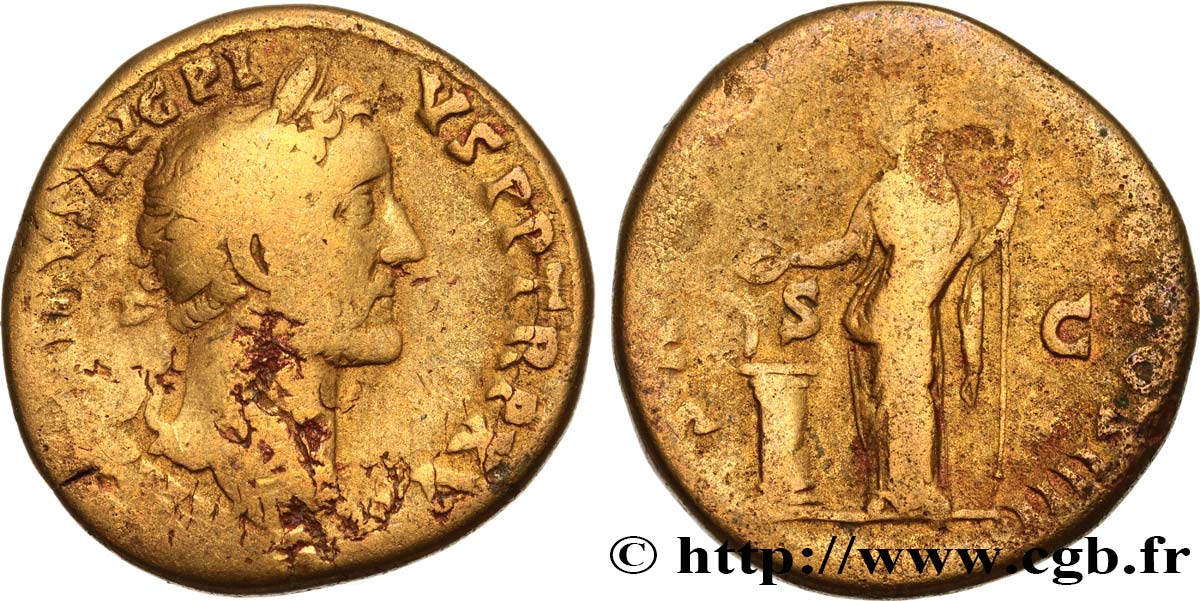
 Report a mistake
Report a mistake Print the page
Print the page Share my selection
Share my selection Ask a question
Ask a question Consign / sell
Consign / sell
 Full data
Full data